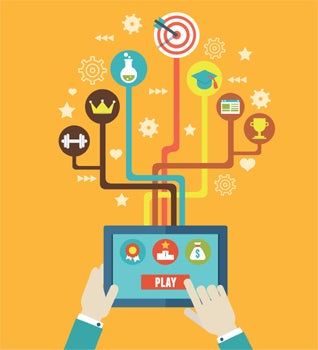
Technology it is often seen as a factor that drives people’s stress up. One of the main reasons is that we do use technology a lot to manage our business activities, and we associate it mainly with speed. Our mind relates technology only with activities like the number of emails we have in our inbox daily, how many phone calls are in our calendar for the day, or the quick log in to the next conference call.
This stream of negative thoughts around technology and connectivity, it is also amplified by the way we carry on activities in general in our daily routine. We live in an age where everything moves extremely fast also in our personal life. I see it even with my kids. A very competitive landscape at school, always engaged with too many activities after school, and when they are home during the week end they are often connected with the smartphone, computer and Xbox.
In spite of all these circumstances, I still believe that with proper use, technology can help in many ways to connect people and even be used a powerful stress management tool.
Let me start saying that to me, the real problem behind our stress, is not the fact that we are surrounded by technology, rather the way we make use of it. Also this aspect really relates to different human personalities. Meaning that individuals do react differently to technology stimulus.
Let me give you an example. If your nature is such that you always think forward, never stop, and believe that the success of your career is strictly related to the ability to answer and clear all the emails you have in your inbox by the end of the day, this behavior will drive you to the opposite outcome. Chances are that every morning your start your day with anxiety thinking about the volume of email and calls you absolutely have to manage, and less about the quality of the work you need to do to create real value. These are also the thoughts you are going to bring back from work and go to bed with.
With this mindset you will of course use technology to connect every moment of your day and night, and after sometime you will end up living always projected into the future, forgetting that the future is now and you can control what’s going to happen even tomorrow.
If we don’t change the way we think, the behavior I just described, will not only keep us away from generating value (there are many research paper out there showing that speed of answering emails creates more mistakes than value), but it will also prevent us from living a life.
So the problem behind our unbearable stress levels and the root cause of most of it lies in our mind. We never think about this, but our inability to understand and manage an ongoing stream of thoughts is the root cause our daily suffering. And this prevents us from living a good quality personal life, and to perform with balance at work.
What is that we can do to get control over our mind? How can technology support and reinforce the process that leads to a more balanced work and personal life?
In my opinion, part of the answer to the first question comes from being able to experience Mindfulness, which is the human ability to live in the present moment, fully aware of where we are, what’s going on around us, and what we are doing.
Mindfulness is naturally engraved in our DNA, and we experience it in full as babies and kids. Unfortunately, at some point of our life journey we start to lose it and, surrounded with a culture that is always projecting our wishes to a future that is not even happened yet, we all tend to forget about it.
How to free our mind from the unstoppable thinking and bring back Mindfulness to our life?
There are many ways to restore mindfulness. Meditation, or the practice of training the mind, is a great tool to experience and develop, but it requires dedication and is certainly a long term project.
A useful first step to start training our minds is to learn how to focus on something in depth during our free time. This can be a hobby like playing music, running, gardening or even when simply walking. For instance, when we walk we can look around, focus on our breath and on a specific object. Let’s say we focus on a tree and we really study its colors, the texture of the leaves, the size, its roots, and while doing it we unplug our mind from any other distracting thoughts.
For many people also this type of exercise is tough to do in the very beginning, and overtime I found that technology can help people to get there easier.
How can we use technology to bring more mindfulness into our life?
I’ve personally explored the use of music, and have learned to focus on the rhythm, the harmony, and the melody of a song. I do this on a walk or while sitting at the park, but also while running on a treadmill. This exercise can be simply done with the use of a basic technology like a smartphone and a pair of headphones.
A more structured example comes from the use of gamification, or like Google defines it as “the application of typical elements of game playing (e.g., point scoring, competition with others, rules of play) to other areas of activity, typically as a technique to encourage engagement with a product or service”.
“Dozens of research studies can be marshaled to demonstrate games’ capacity to increase self-efficacy, motivation, determination, resilience, and creativity, to promote social relationships and cooperation, and to treat clinical anxiety, depression, and stress”[1].
To date, the majority of commercially successful games for health have focused on fitness, appealing to an extremely broad adult population. But, as the healthcare market and recognition of games’ potential continue to drive the proliferation of games for health, truly fun games for specific health conditions are almost certainly on their way[2].
I believe that these are only a few examples where technology can be used and help to generate mindfulness and control our stress level, and that more research needs to be done, as well as more technology needs to be developed to support people in their journey toward mindfulness.
Federico Foli ©
[1] McGonigal, Jane. “Show Me the Science! Resilience, Games, Post-Traumatic Growth, and More.” SuperBetterBlog 4 Jun. 2012. Web. 21 Jul. 2013 .
[2] Annie Ryu, Gamification Rules, August 201, 2014, https://www.hcs.harvard.edu/hghr/print/student/gamification-rules/
